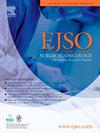Neoadjuvant chemotherapy and chemoradiotherapy versus chemoradiotherapy alone in high-risk locally advanced rectal cancer: A retrospective comparison of two Dutch tertiary referral centres
IF 3.5
2区 医学
Q2 ONCOLOGY
引用次数: 0
Abstract
Introduction
The effect of neoadjuvant chemotherapy and chemoradiotherapy in patients with locally advanced rectal cancer, at increased risk of failing current treatment regimens, is unknown. This study compared the complete response rate and long-term survival of these patients treated with or without neoadjuvant chemotherapy prior to chemoradiotherapy.
Materials and methods
Patients with high-risk locally advanced rectal cancer, who were surgically treated or entered a watch and wait approach after neoadjuvant chemoradiotherapy with or without neoadjuvant chemotherapy in Erasmus Medical Centre or Catharina Hospital between 2016 and 2020, were retrospectively identified. High-risk was defined as the presence of tumour invasion into the mesorectal fascia, grade 4 extramural venous invasion, enlarged lateral lymph nodes, or tumour deposits. The primary endpoint was complete response rate, which was defined as a histopathological complete response or a sustained (during 12 months) clinical complete response. Long-term oncological outcomes were evaluated based on Kaplan-Meier and Cox regression survival analyses.
Results
The neoadjuvant chemotherapy group consisted of 64 patients, of whom 61 (95.3 %) were treated with chemotherapy prior to chemoradiotherapy, the chemoradiotherapy group of 194 patients. The complete response rates were 25.0 % and 9.8 %, respectively (P = 0.002). The estimated 3-year overall survival was 92.2 % in the neoadjuvant chemotherapy group versus 66.9 % in the chemoradiotherapy group.
Conclusion
Excellent oncological outcomes were observed in patients with high-risk locally advanced rectal cancer selected during a multidisciplinary team (MDT) meeting for neoadjuvant chemotherapy and chemoradiotherapy. The actual difference with patients treated with chemoradiotherapy alone should be investigated in prospective trials. Pretreatment referral to expert MDTs is encouraged.
求助全文
约1分钟内获得全文
求助全文
来源期刊

Ejso
医学-外科
CiteScore
6.40
自引率
2.60%
发文量
1148
审稿时长
41 days
期刊介绍:
JSO - European Journal of Surgical Oncology ("the Journal of Cancer Surgery") is the Official Journal of the European Society of Surgical Oncology and BASO ~ the Association for Cancer Surgery.
The EJSO aims to advance surgical oncology research and practice through the publication of original research articles, review articles, editorials, debates and correspondence.
 求助内容:
求助内容: 应助结果提醒方式:
应助结果提醒方式:


